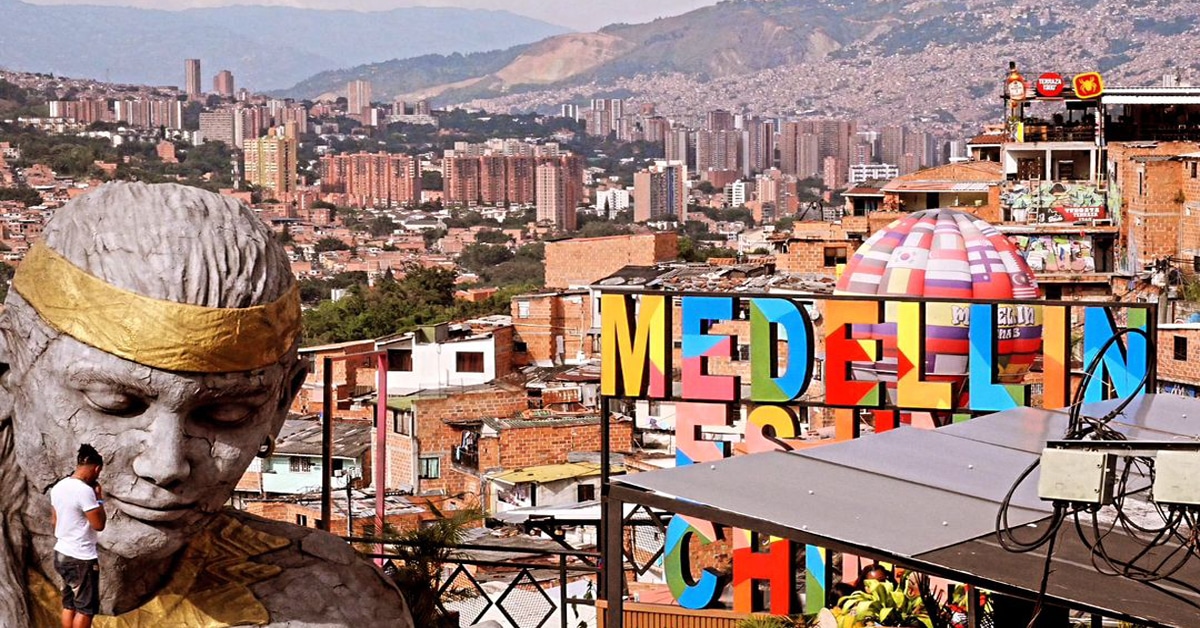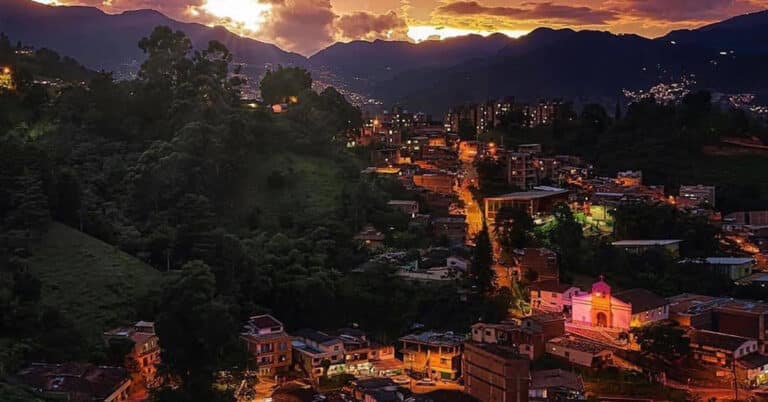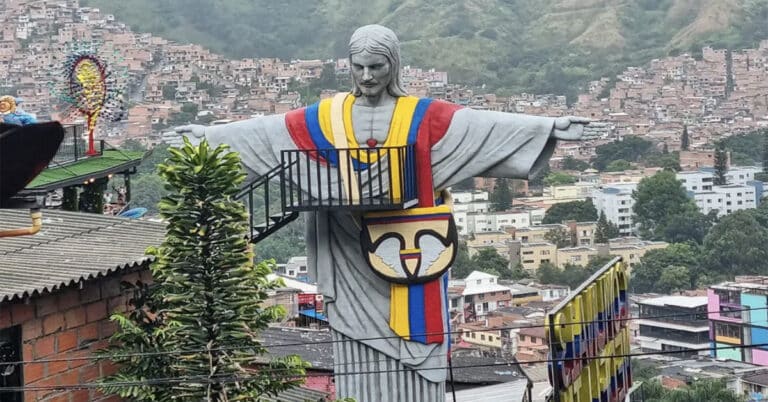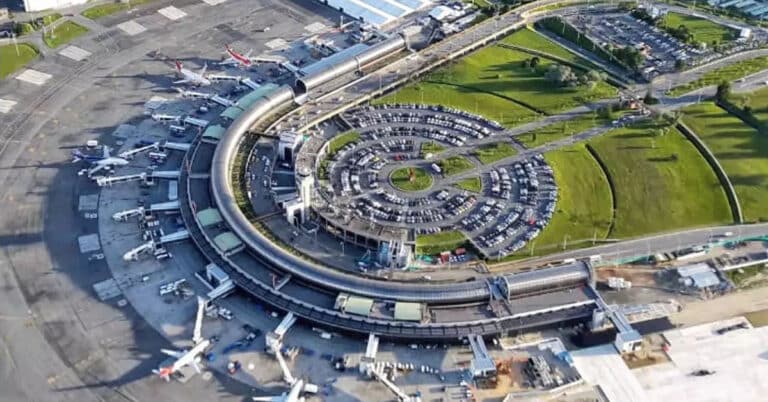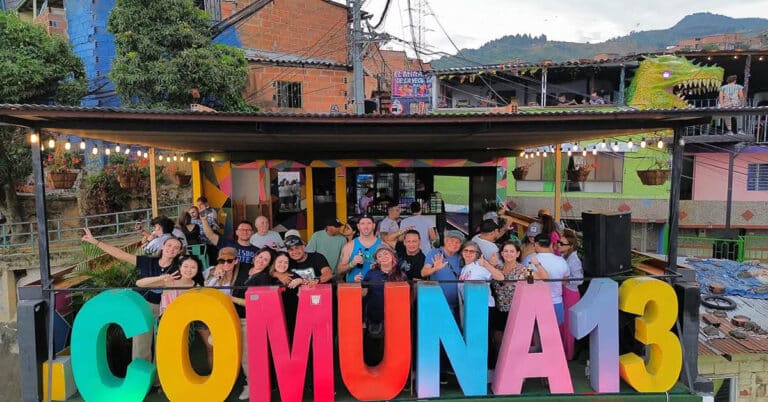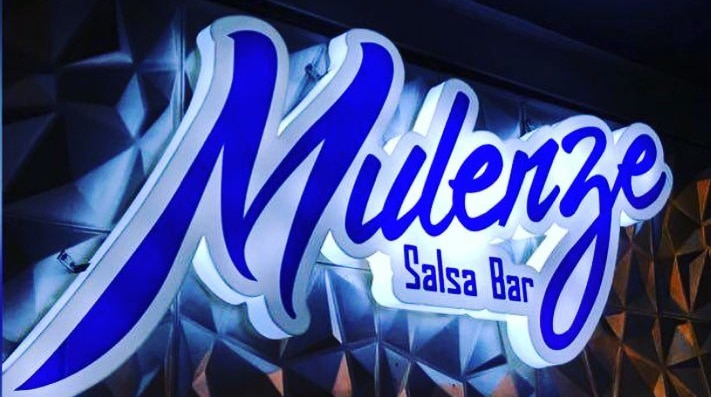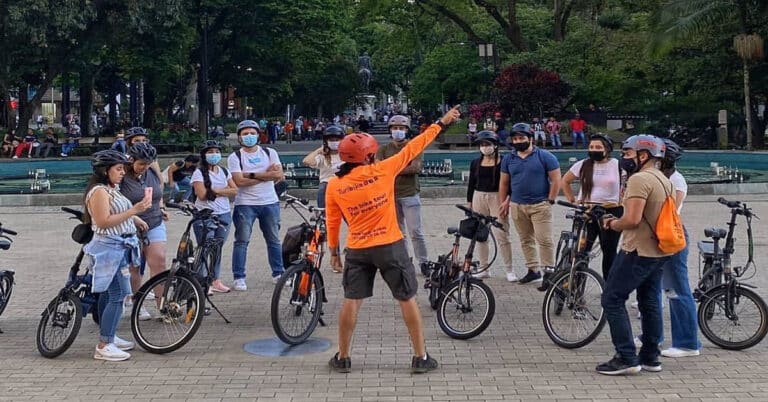Comuna 13 was once one of the most dangerous neighborhoods in the most dangerous city in the world. It was an area controlled by gangs with daily battles between competing paramilitaries and guerilla groups terrifying and traumatizing the population.
Today Comuna 13 is one of the artistic and culture centres of Medellin. The area is renowned for it’s amazing street art, music, poetry, creativity, innovation, and energy. Comuna 13 has become one of the most beautiful, welcoming and popular areas of the city with locals welcoming thousands of visitors every week.
I have lived in Medellin for 16 years and in this article I will explain how the neighborhood has changed and why you should definitely visit when you are in town.
what is Comuna 13?
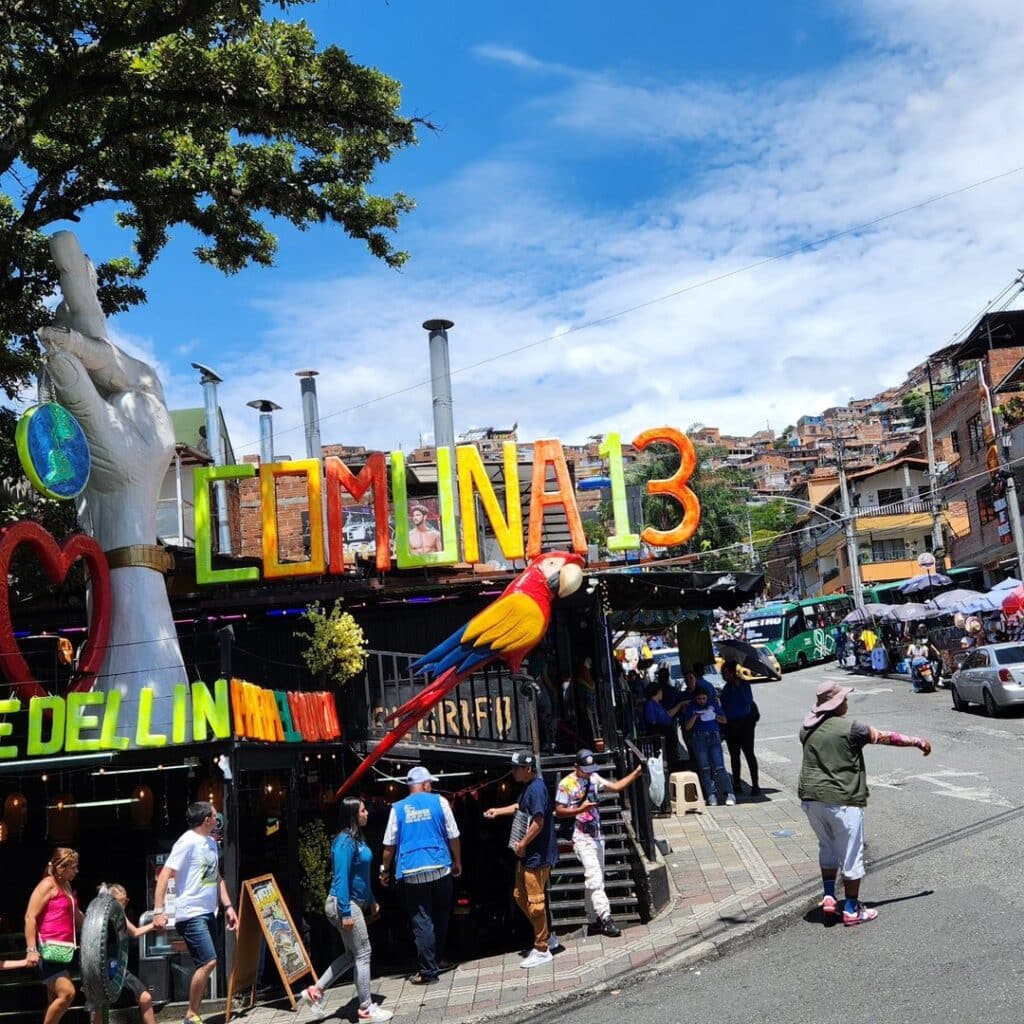
Comuna 13 refers to the San Javier area in the Southwest of Medellin with a population of a little over 170,000. Medellin is divided into 16 comunas or communes in English; Poblado is within Comuna 14 and Laureles is in Comuna 11.
Comuna 13 is one of the poorer parts of the city with most houses situation within estrato 1 or 2 zones. Every residential zone in Medellin is given a ‘estrato’ between 1 and 5. The lower level estratos receive additional financial support and have fewer taxes with the zones decided by income levels, infrastructure and types of buildings.
When I first moved to Medellin I was advised by friends to avoid San Javier at all costs. It was an area most associated with gang violence and crime. The people became marginalized and were isolated from the rest of the city for many years. Today La Independencia neighbourhood of San Javier is one of the most popular tourist destinations and is renowned for its energy, art, music, culture and infectious joy.
A combination of concerted efforts by local government and wonderful neighborhood initiatives have transformed the area. The positive impact of national and international tourism is more evident in Comuna 13 than anywhere else in the country.
A Violent and troubled recent history
The area to the west of the city was once known as “Las Granjas” or the farms. It was founded by farmers fleeing violence in rural Colombia and over the years informal settlements were established. In the years that followed larger waves of immigrants arrived from across the country. The new settlers were experienced in farming and construction which meant they had few opportunities in Medellin. They also faced discrimination and they lived in very poor conditions.
The children of these immigrants found that gangs, guerillas, and paramilitaries offered opportunities to feed themselves and their families that they couldn’t find elsewhere. The violence that forced their families to flee the countryside soon surrounded them once again.
Fights between rival gangs turned Comuna 13 into what felt like a war zone. With the rise of the cartels, the youth of San Javier were recruited and the barrio became the frontline between warring factions. Control of the neighborhood also switched between left wing guerilla groups such as FARC and ELN and right-wing paramilitary groups. These armed groups would extort local businesses while promising to restore security and provide what the state had failed to do.
At this time of conflict and turmoil, state interventions could add fuel to the flames. The notorious operations Mariscal and Orion of 2002 remain a source of pain and anger for the community. The military and police worked with paramilitary groups to remove the guerilla presence in days of fighting which left many combatants and civilians dead and detained.
Dozens of bodies have since been found buried in the nearby hills, including women and children.
Transformation through art, inclusion and innovation
In the years that followed local government efforts have focused on integrating and investing in areas such as San Javier to bring renewed hope and optimism. Libraries, parks, community spaces and schools were built in poorer neighbourhoods to provide for the local population and show the city supported them. The cable car network brought previously isolated areas closer to the center of the city, significantly cutting time to commute which created new work opportunities. The escalators in Comuna 13 were the most striking example of this approach in action.
Alongside this top down renovation was a community-led effort to celebrate the virtues of the area and tell the stories of the people. Art and community projects focused on graffiti, poetry, rapping, singing, and dialogues. They also established gardens and new urban farms to grow produce sold in the city. Hip hop based Casa Kolacho was formed to connect with young people in Comuna 13 and inspire them to take another path.
Casa Kolacho also set up the first graffiti tours which began a tourism boom in San Javier. The area now welcomes up to 6,000 tourists at the weekend with locals selling food, art, souvenirs and clothing to the visitors.
Top Reasons to Visit comuna 13
Learn about the people and history of the neighborhood with a local guide
Walking around the area with an enthusiastic, experienced local guide gives a unique insight to life in the barrios of Medellin. You can learn about how the people showed resilience during difficult, turbulent times and how the community has come together to build a very different future. The guides will tell stories, introduce you to locals, invite you to try street food and take you to interesting areas.
While you can definitely do your own thing if you don’t walk too far from the escalators, a guided tour is highly recommended for your first visit.
Take Amazing photos overlooking the city
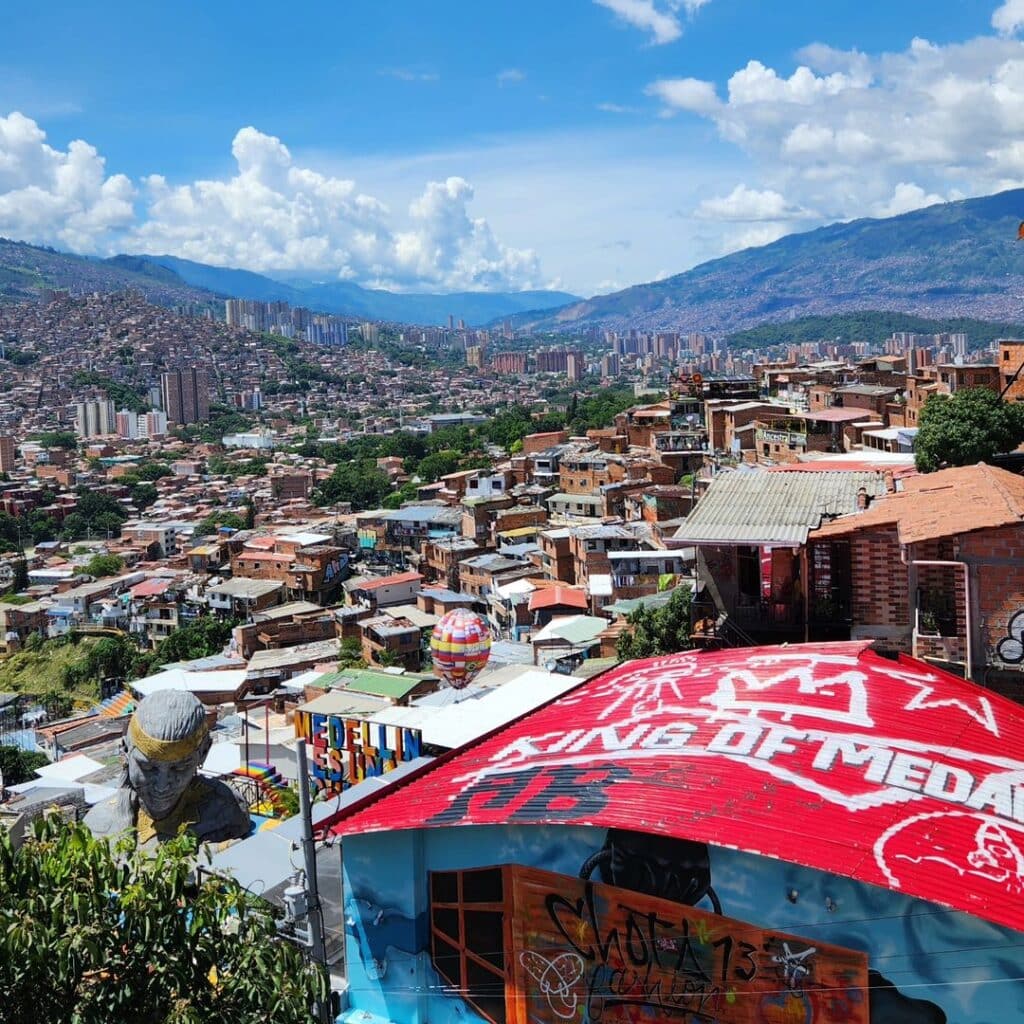
The views from the top of the escalators, along the pedestrian path and on the roof of the bars in La Independencia are incredible. You can look down across the whole of Medellin as the colourful houses of the Comuna 13 mountainside turn into typical orange brick buildings and then the tower blocks of downtown. You can see how the whole city sits within the lush green valley and how the neighborhoods rise up from the river running along the center.
Locals have also set up some creative photo spots, including a giant sculpture with an outstretched hand you can sit on overlooking the city.
Enjoy breakdancing and freestyle hip hop performances
Tourism has brought visitors and opportunities to the neighbourhood and creative youngsters have seen this as an opportunity to showcase their talents. There are several dance groups who combine hip hop with popular local dance styles to perform for visitors. They have amazing routines full of style and energy.
Comuna 13 has also been one of the centres of hip hop music in the city. Traditionally the music was a celebration of the resilience and endurance of the people surrounded by violence, poverty and corruption. There is still a strong social awareness in the music of the neighbourhood but it is also playful and upbeat, reflecting the positive changes. When you walk around Comuna 13 you will find small groups of rappers performing incredible freestyle raps to entertain visitors.
Stopping to enjoy a performance is a highlight and rappers show incredible skill to freestyle lyrics about the visitors.
Ride the famous escalators which helped spark the revival
As part of the local government’s efforts to regenerate Comuna 13, the urban escalator network was built in 2011. The 384 meter escalators come in 6 separate sections and replaced the steep 350 concrete steps.
At the time of their construction, there were questions about the impact of the project, with many arguing the significant investment could be better spent but it has proved to have been a huge success. The escalators made it easier for locals to reach the top of the neighbourhood and turned the area into a real tourist destination. It has brought San Javier closer to the city.
Admire the amazing graffiti and learn the significance of each design
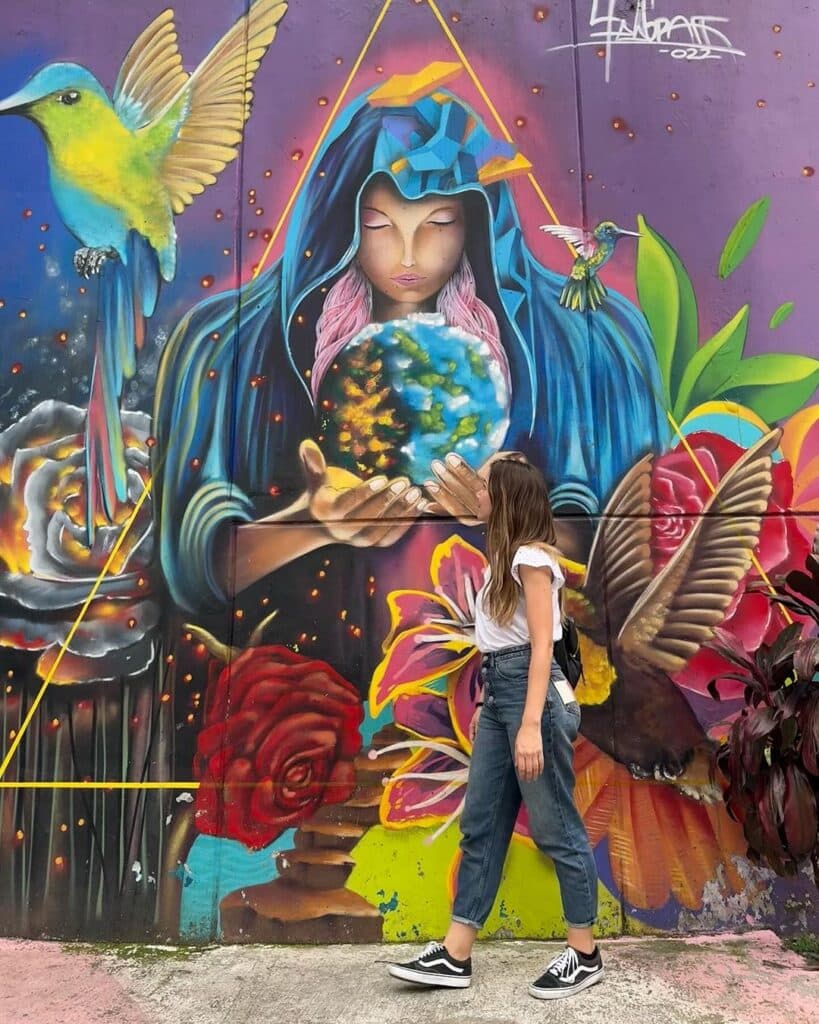
Walls all over La Independencia are covered with beautiful, brightly colored graffiti. Each design is unique and tells the story of the people in the neighborhood. There are walls that depict struggle but also resilience, optimism and positivity. The graffiti is a celebration of the diverse culture of Comuna 13.
drink artisanal beer with amazing views
There are a number of stalls and bars offering a wide range of local artisanal beers now in Comuna 13. If you head up the escalators you will find El Parche, El Kombi and Phoenix 013 beer companies. They have some excellent beers and you can relax with an amazing view surrounded by friendly locals.
try popular street food and snacks
All over La Independencia you will find families who have set up small restaurants or street stands offering their versions of some of the most popular snacks. A wide range of arepas, empanadas, hot dogs piled high with ingredients, mango, frozen treats and obleas.
Take a little bit of cash and try a wide range of delicious local favorites. You will also be supporting the businesses of locals who are providing new opportunities for their families who are selling to the new visitors to the area.
Attend the annual cinema and video festival
Comuna 13 has hosted a number of important annual cultural events recently. Last month was a reggaeton music festival and this month there is a cinema festival with local directors telling stories from the neighbourhood. San Javier continues to grow as a thriving cultural hub for the city.
getting to comuna 13
The closest metro station to La Independencia neighborhood of Comuna 13 is San Javier. San Javier is the final stop of the shorter Line B of the metro network. It is a few stops from Estadio and Suramericana in Laureles. If you are traveling from Poblado you should change from Line A to Line B at San Antonio station. You can change lines by heading upstairs and there is no additional cost.
Once you get to San Javier station you can take a taxi or jump on either bus 221i or bus 225i. The buses pass at th traffic lights next to the station and you can wave them down. This will leave you two blocks down from the escalators and tours. The driver should be able to tell you when to get off. The bus fare is 2,255 COP (US$0.53) and the taxi will be close to the minimum, which is 4,900 COP (US$1.16) at the time of writing.
Taking a taxi or Uber is the quickest and easiest way to get into the heart of the neighborhood. While it has a very different look and feel to Laureles, it is actually only around 4km away.
A taxi from Laureles will be about 12,000 COP, from downtown about 15,000 COP and from Parque Poblado around 25,000 COP. Depending on the time of day and demand an Uber should be slightly cheaper. You can also now order Taxis on the Uber app with an approximate but not exact price shown.
You will also be able to book tours including transfers from Laureles or Poblado. I would recommend going direct to the neighbourhood and either joining a tour or reserving a spot direct with one of the many groups based in Comuna 13. This way you will have a local guide who lives in the community or you will cut out an unnecessary middle man if your tour company is subcontracting a local guide.
Safety and Security
The community has fully embraced and welcomes tourism with seemingly every house around La Independencia adapting to sell food, drinks, art and souvenirs. The people are very proud of how the perception of the neighborhood has changed and how many people have a positive experience during their visit.
That said it is still one of the poorer parts of the city, so you should be sensible and take care. Avoid venturing too far from the escalators in the center of the neighbourhood and I would generally recommend heading home before the sun goes down. If you do arrive or leave later then take a taxi and be direct. In the popular areas of the neighbourhood you are fine taking pictures and carrying your phone but do take some care.
I would strongly recommend a visit to Comuna 13 and most people will only have a positive experience but be aware of your surroundings and behavior.

